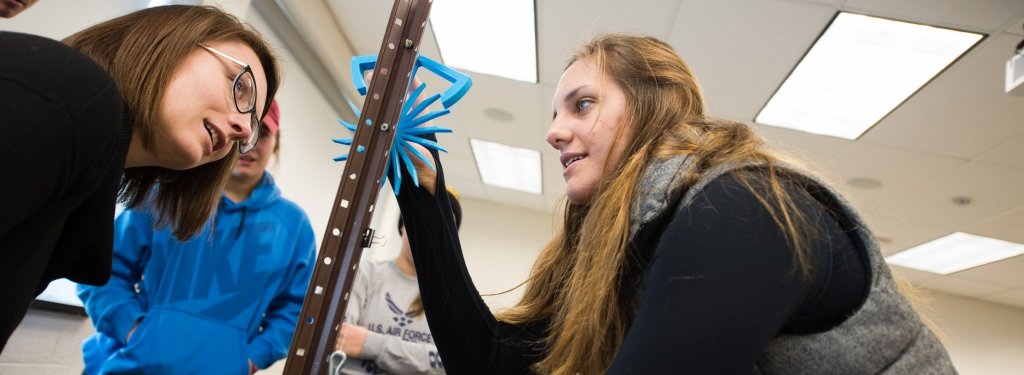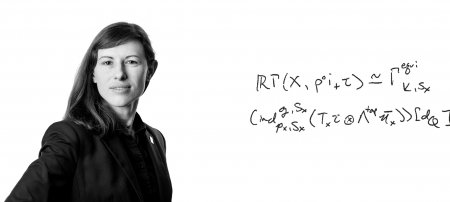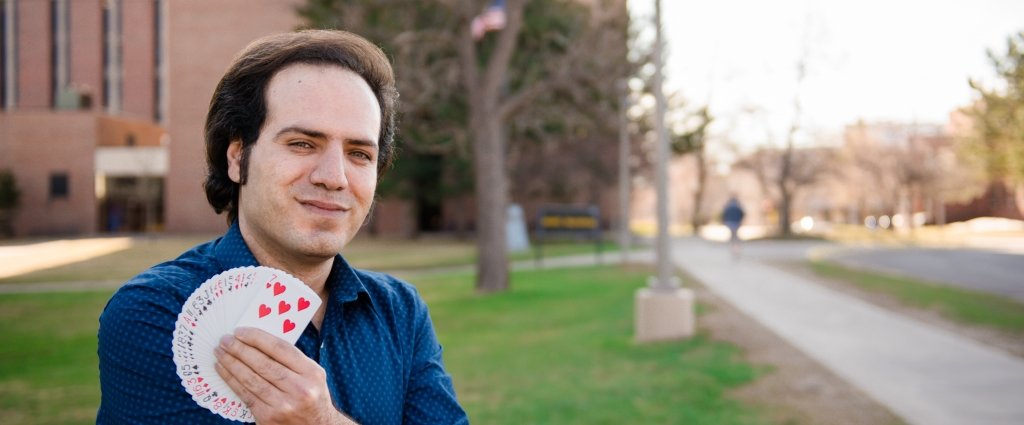Pinelis Invents New Calculus Rules
Iosif Pinelis is on a mathematical mission. Three centuries after the golden age of Newton and Leibnitz, he is lobbying to have a new rule or two introduced into calculus texts.
While his work on the subject has been published several times in leading journals, most of the responses so far to his suggestion that it also appear in textbooks have been variants of "it's a long shot, but not inconceivable."
This has not discouraged Pinelis, who is used to climbing bareknuckled into unfamiliar rings. In the past, he has applied his heavyweight logic to Eiffel Tower design theory and the origin of species. So, to develop and prove a calculus rule is not such a great stretch, though evidently getting it into a textbook would involve a minor miracle.
The problem, notes Glen D. Anderson, a mathematics professor at Michigan State University, is that calculus texts don't lack for material. "The course outline is always crowded, and there's not enough time to teach the desirable topics." In other words, if something is added, something else must be taken away. However, Anderson said, "I am very sympathetic to the inclusion of [Pinelis's] rules in a calculus course; they would be an interesting, useful and powerful addition."
The fundamentals of calculus have been virtually immutable for so long that the body of knowledge outlined in college texts has become known as "the calculus."
"While a great many little gems have been discovered in calculus over the last 300 years, hardly any of them have made it into a textbook," says Pinelis, a professor of mathematical sciences. "Calculus itself has remained unchanged."
Thus, no one was more surprised than Pinelis when he stumbled over one rule and then another similar to l'Hospital's rule, known to every student of calculus, at least until after the final. Here's l'Hospital's rule in math language (Editor's note: If you are not fluent in math, skip to the next paragraph): Under certain general and natural conditions, the limit of the ratio f/g of two functions f and g at a given point a is the same as the limit of the derivative ratio f'/g' at point a, provided that both functions f and g vanish (or go to infinity) at point a.
Pinelis illustrates in English. "Imagine two cars starting from L'Anse on a trip to Marquette at the same time," Pinelis says. "According to l'Hospital's rule, the ratio of their distances from the starting position will--initially--be close to the ratio of their initial speeds."
For example (assuming neither driver stops at the Hilltop for a cinnamon roll), if one car starts out going about twice as fast, it will travel about twice as far along U.S. 41, at least at the very beginning of the trip. "This rule may seem intuitively obvious, but it's very powerful and has numerous applications in math," Pinelis said.
About 15 to 20 years ago, Pinelis and a few other mathematicians working independently discovered a similar rule. Continuing the car analogy, suppose that the ratio of their cars' speeds is increasing. For example, one driver headed to jury duty in federal court is speeding up slowly, say at a rate of 1 percent every 15 minutes, to get to downtown Marquette on time; the other is accelerating at, say, twice that rate so she doesn't miss the plane to Detroit. The ratio of their distances from their starting position in L'Anse will then be increasing. Again, this seems pretty obvious. "But such a rule has already had numerous useful applications, in statistics, probability, differential geometry, approximation theory, information theory, mathematical physics, etc.," Pinelis said. "And it was discovered by people working independently in very distant from one another areas of math precisely because they needed it in their respective areas." Pinelis refers to this rule as the special-case rule for monotonicity, because of the start-at-the-same-point restriction.
"It's pretty strange that this wasn't discovered 200 or 300 years ago," he adds. "I was working on some papers in the late 1980s and found something close to this special-case rule." Years later, in 2001, he was inspired by a question in information theory posed by Danish mathematician Flemming Topsøe to think of the general rule: What happens if the cars don't start at the same spot?
In this case, imagine that one of the cars going to Marquette starts in Baraga and the other starts in Chassell, both at noon. What can you say about the ratio of their distances from Houghton, providing again that the ratio of their speeds is increasing?
Once Pinelis asked the question, finding the answer was pretty straightforward. The ratio will increase all the way, decrease all the way, or switch exactly once, from decreasing to increasing. “This general rule, without the start-at-the-same-point restriction,” Pinelis stresses, “is much more powerful and much more broadly applicable than the special-case one.”
These rules may seem like nothing more than a high-end version of the story problems that baffled many of us in junior high. However, Pinelis says, these rules can be applied throughout science and engineering. "Wherever varying ratios arise, these rules may be helpful."
"These rules are also simple to state, and they're about as easy to prove as l'Hospital's rule," he says. "Plus, they are just as easy and fun to use, and at least as helpful, so why not have them in a textbook?"
Will Pinelis's rules find their way into the next edition of Hughes-Hallett's "Calculus"? It may be a long shot, say his colleagues, but it's not inconceivable.
"I very much liked his development of the rules," said Jonathan Borwein, a mathematician and professor of computer science at Dalhousie University in Halifax, Nova Scotia, who has read Pinelis's work. "I think it will be interesting to see how much success Dr. Pinelis will have in attracting the interest of analysis teachers; typically, such changes rely on at least one high-impact text buying in."
Matti Vuorinen, a mathematics professor at the University of Turku, in Finland, agreed. "It is true that this rule deserves to be more widely known and applied," he said, adding, "Calculus courses are usually very much filled with material, so I think it may be difficult to find a place for this new material. What is the best way to promote this rule? I do not know the answer."
Pinelis himself knows a thing or two about probability theory, but he's not setting any odds. No matter how fat or lean the chances, he says, "I'll keep pushing it."
Pinelis's papers on the new calculus rules are posted at https://pages.mtu.edu/~ipinelis/lhosp/ .
Michigan Technological University is an R1 public research university founded in 1885 in Houghton, and is home to nearly 7,500 students from more than 60 countries around the world. Consistently ranked among the best universities in the country for return on investment, Michigan's flagship technological university offers more than 185 undergraduate and graduate degree programs in science and technology, engineering, computing, forestry, business, health professions, humanities, mathematics, social sciences, and the arts. The rural campus is situated just miles from Lake Superior in Michigan's Upper Peninsula, offering year-round opportunities for outdoor adventure.




Comments